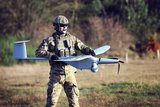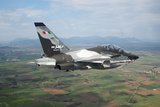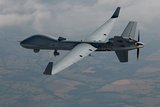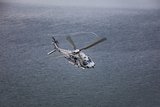DARPA X-plane with revolutionary controls hits new milestone
The demonstrator aircraft is expected to have modular wing configurations that enable future integration of new technologies for flight testing. (Photo: Aurora Flight Sciences)
The Defense Advanced Research Projects Agency (DARPA) has selected Aurora Flight Sciences, a Boeing subsidiary, to move into Phase 2, the detailed design phase of the Control of Revolutionary Aircraft with Novel Effectors (CRANE) programme.
At the project’s heart, there is an experimental aircraft without traditional moving surfaces to control it in flight, instead using active-flow control (AFC) – short bursts of air.
‘Over the past several decades, the active-flow control community has made significant advancements that enable the integration of active-flow control technologies into advanced aircraft,’ CRANE programme manager Richard Wlezien said in a statement.
‘We are confident about
Already have an account? Log in
Want to keep reading this article?
More from Air Warfare
-
![Podcast: Critical Care episode 5 - Sustaining Europe’s frontline from Heidelberg]()
Podcast: Critical Care episode 5 - Sustaining Europe’s frontline from Heidelberg
As Europe ramps up defence investment in the wake of the Ukraine crisis, the spotlight is turning to how nations sustain their growing fleets.
-
![Leonardo signs contract on Austria’s M-346 aircraft order]()
Leonardo signs contract on Austria’s M-346 aircraft order
The first of the 12 M-346 aircraft are expected to be delivered to the Austrian Air Force by 2028, according to the company.
-
![2025 UAV market review: $7.8 billion in new contracts signed as US leads spending]()
2025 UAV market review: $7.8 billion in new contracts signed as US leads spending
Qatar and Indonesia followed the US’s high spending on new uncrewed aerial vehicle contracts across 2025, while MALE and micro drones and loitering munitions were particularly popular subcategories this year.
-
![German Navy in “ramp-up” phase as it welcomes first NH90 Sea Tiger delivery]()
German Navy in “ramp-up” phase as it welcomes first NH90 Sea Tiger delivery
With all 31 aircraft set to be delivered by 2030, the helicopters will gradually replace the ageing Sea Lynx fleet which are due to be retired in 2026.






















